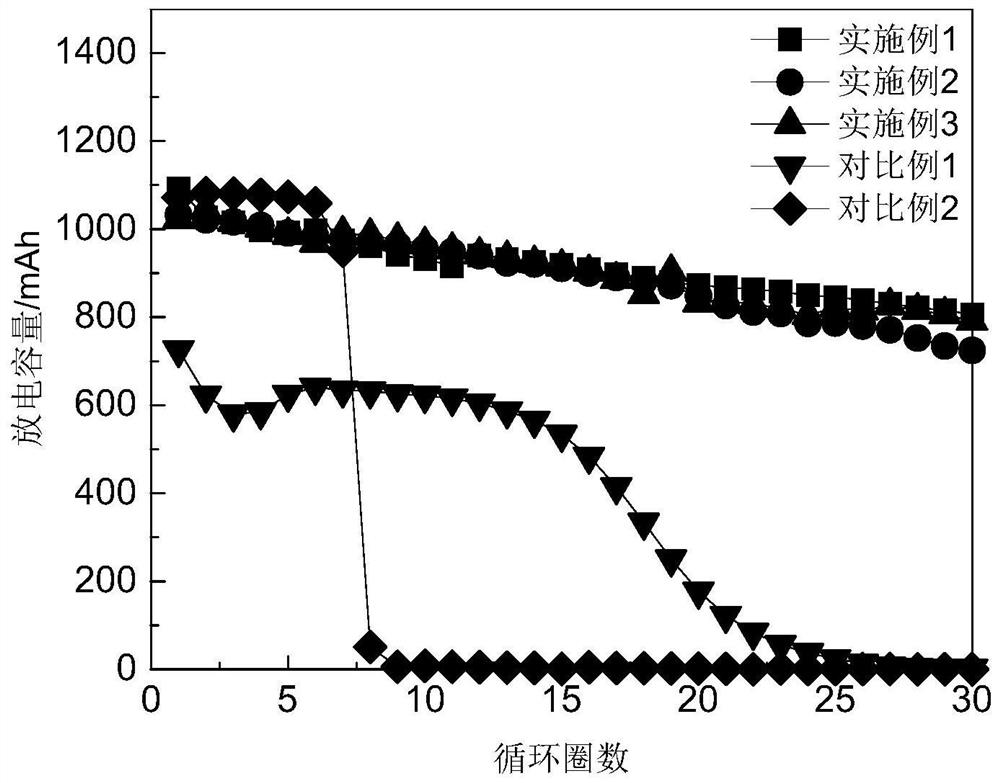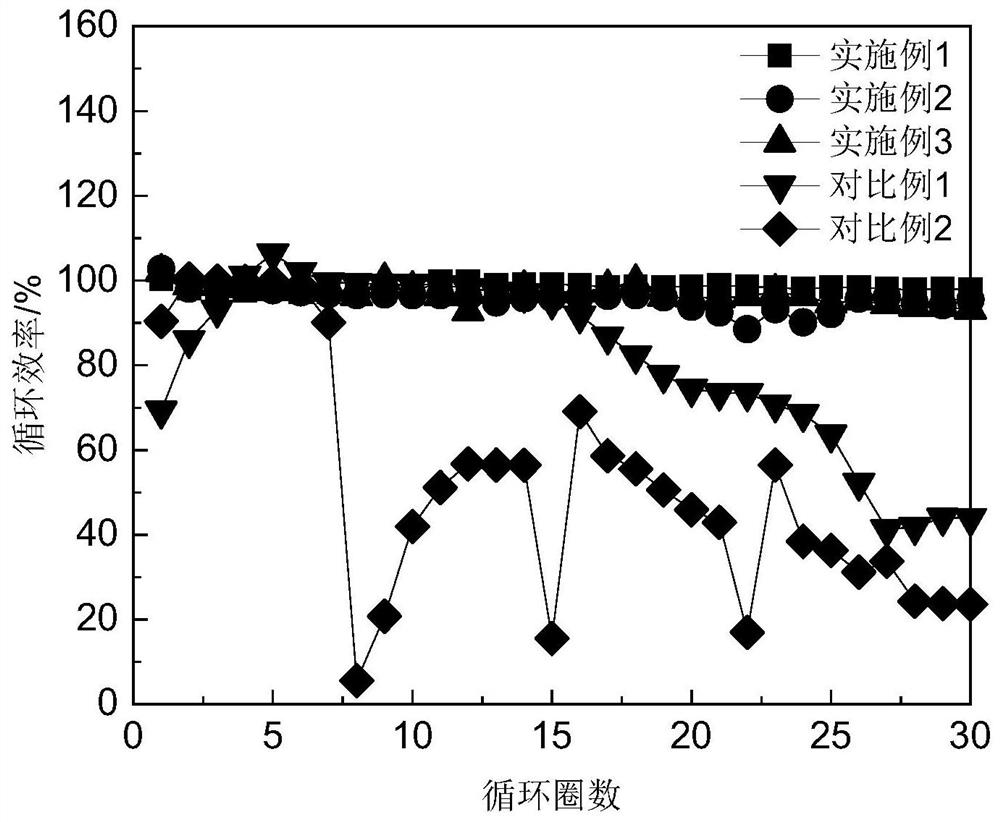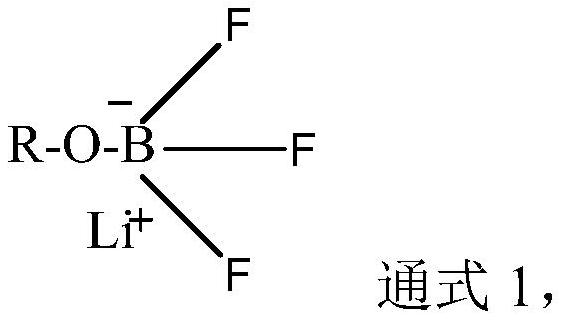Electrolyte of negative-electrode-free secondary lithium battery, negative-electrode-free secondary lithium battery and formation process
A secondary lithium battery and electrolyte technology, applied in secondary batteries, battery electrodes, secondary battery repair/maintenance, etc., can solve the problems of poor high temperature performance, low room temperature conductivity, etc. The effect of high conductivity and broadening the electrochemical stability window
- Summary
- Abstract
- Description
- Claims
- Application Information
AI Technical Summary
Problems solved by technology
Method used
Image
Examples
Embodiment 1
[0040] a. The manufacturing steps of the battery are briefly described as follows: lithium nickel aluminum cobalt oxide (NCA) is mixed with conductive carbon black (Super P), carbon nanotube (CNT), and polyvinylidene fluoride in a weight ratio of 93:2:2:3 Finally, add N-methylpyrrolidone and stir evenly to prepare positive electrode slurry. According to one side 27mg / cm 2 Coated with a surface density of 100 degrees Celsius for 12 hours in vacuum, then rolled and cut to make positive electrode sheets; using 10 μm copper foil as the negative electrode current collector, ultrasonically cleaned the copper foil in 1% nitric acid aqueous solution for 3 minutes to remove the oxide layer and dust impurities. Clean the acid-treated copper foil with absolute ethanol, dry it after cleaning. Carbon nanotubes with a thickness of 1 μm were coated on both sides of the copper foil, dried at room temperature, and then cut to form negative electrodes. The positive and negative plates are se...
Embodiment 2
[0044] a. The manufacturing steps of the battery are briefly described as follows: lithium nickel aluminum cobalt oxide (NCA) is mixed with conductive carbon black (Super P), carbon nanotube (CNT), and polyvinylidene fluoride in a weight ratio of 93:2:2:3 Finally, add N-methylpyrrolidone and stir evenly to prepare positive electrode slurry. According to one side 27mg / cm 2 Coated with a surface density of 100 degrees Celsius for 12 hours in vacuum, then rolled and cut to make a positive electrode sheet; using 24 μm copper foil as the negative electrode current collector, the copper foil was ultrasonically cleaned in 1% nitric acid aqueous solution for 3 minutes to remove the oxide layer and dust impurities. Clean the acid-treated copper foil with absolute ethanol, dry it after cleaning. Coated acetylene black with a thickness of 1 μm on both sides of the copper foil, dried at room temperature, and then cut to make negative electrodes. The positive and negative plates are sep...
Embodiment 3
[0048] a. The production steps of the battery are briefly described as follows: After mixing lithium nickel aluminum cobalt oxide (NCA) with conductive carbon black (Super P) and polyvinylidene fluoride in a weight ratio of 95:2:3, add N-methylpyrrolidone, Stir evenly to make positive electrode slurry. According to one side 27mg / cm 2 Coated with a surface density of 100 degrees Celsius for 12 hours in vacuum, then rolled and cut to make positive electrode sheets; using 10 μm copper foil as the negative electrode current collector, ultrasonically cleaned the copper foil in 1% nitric acid aqueous solution for 3 minutes to remove the oxide layer and dust impurities. Clean the acid-treated copper foil with absolute ethanol, dry it after cleaning. Carbon nanotubes with a thickness of 1 μm were coated on both sides of the copper foil, dried at room temperature, and then cut to form negative electrodes. The positive and negative plates are separated by a polypropylene (PP) ceramic...
PUM
| Property | Measurement | Unit |
|---|---|---|
| Thickness | aaaaa | aaaaa |
| Diameter | aaaaa | aaaaa |
Abstract
Description
Claims
Application Information
 Login to View More
Login to View More - R&D
- Intellectual Property
- Life Sciences
- Materials
- Tech Scout
- Unparalleled Data Quality
- Higher Quality Content
- 60% Fewer Hallucinations
Browse by: Latest US Patents, China's latest patents, Technical Efficacy Thesaurus, Application Domain, Technology Topic, Popular Technical Reports.
© 2025 PatSnap. All rights reserved.Legal|Privacy policy|Modern Slavery Act Transparency Statement|Sitemap|About US| Contact US: help@patsnap.com



